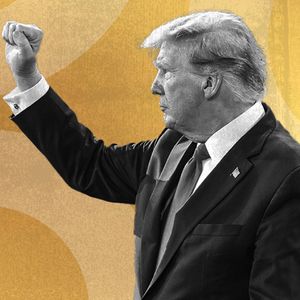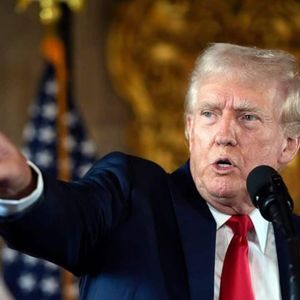BitcoinWorld Stablecoin Bill: Unlocking Trillions? David Sacks on US Senate’s Positive Move for Crypto Regulation A significant development is unfolding in Washington D.C. that could have massive implications for the digital asset space and the broader U.S. economy. David Sacks, a prominent figure often dubbed a ‘White House crypto czar’ (though not an official title), recently shared his perspective on the potential impact of proposed legislation aimed at regulating stablecoins. According to a post shared by Unfolded on X, Sacks believes a well-crafted stablecoin bill could unlock trillions of dollars for the U.S. Treasury. This optimistic outlook comes as the US Senate took a crucial step forward, voting to advance the GENIUS Act , a key piece of legislation targeting stablecoin oversight. What is the GENIUS Act and Why Does the Senate Vote Matter? The GENIUS Act isn’t just another bill; it represents a concerted effort to bring regulatory clarity to the burgeoning stablecoin market in the United States. The recent vote in the US Senate wasn’t the final passage of the bill, but rather a procedural step: a motion to proceed. Approved by a vote of 69–31, this motion is vital because it allows for formal debate on the bill to begin and opens the door for amendments to be proposed and considered. Think of it as getting the green light to start the main discussion and negotiation phase on the Senate floor. Why is this procedural step significant? It signals a level of bipartisan willingness to tackle stablecoin regulation head-on. While there are undoubtedly differing views on the specifics, the vote indicates that a majority in the Senate recognizes the importance and urgency of establishing rules for these digital assets. This movement towards clarity is something the crypto industry has long advocated for, hoping it will pave the way for greater adoption and innovation within the U.S. financial system. David Sacks’ Bold Claim: How Can Stablecoins Unlock Trillions? David Sacks crypto insights often capture attention, and his assertion that a stablecoin bill could unlock trillions is particularly striking. His reasoning likely centers on several potential economic benefits that could stem from clear, effective regulation: Increased U.S. Treasury Holdings: Many major stablecoin issuers already hold significant reserves in U.S. Treasury bills and other short-term government debt to maintain their peg to the dollar. As the stablecoin market grows globally, fueled by regulatory certainty, the demand for these safe, dollar-denominated assets as reserves is expected to soar. This increased demand translates directly into more funding for the U.S. government via T-bill purchases. Enhanced Dollar Dominance: Clear U.S. regulation could solidify the U.S. dollar’s position as the dominant currency in the digital age. As stablecoins become a widely accepted medium for global digital transactions, the fact that most are pegged to the dollar and backed by dollar-denominated reserves strengthens the dollar’s international role, providing geopolitical and economic advantages. Fostering Innovation and Investment: Regulatory clarity reduces uncertainty, which is a major hurdle for traditional financial institutions and large corporations considering engaging with stablecoins and decentralized finance (DeFi). Unlocking this potential institutional capital and fostering innovation within a regulated framework could lead to new products, services, and economic activity, indirectly benefiting the Treasury through taxes and economic growth. Sacks’ vision suggests that regulatory certainty isn’t just about controlling risk; it’s also a powerful economic catalyst that can attract capital and activity into the U.S. financial ecosystem, ultimately benefiting the government’s finances. Understanding Stablecoins: The Digital Bridge Before diving deeper into the regulatory debate, let’s quickly recap what stablecoins are. In simple terms, a stablecoin is a type of cryptocurrency designed to maintain a stable value, typically pegged to a traditional currency like the U.S. dollar, or sometimes to a commodity like gold. They aim to combine the benefits of cryptocurrencies (speed, global reach, low fees) with the stability of traditional assets. There are different mechanisms used to achieve this stability: Type Mechanism Example (Illustrative) Fiat-Backed Backed 1:1 by reserves of traditional currency (e.g., USD) or equivalents held in banks. USDT, USDC Crypto-Backed Backed by reserves of other cryptocurrencies, often overcollateralized to absorb volatility. DAI Algorithmic Uses algorithms and smart contracts to manage supply and demand, often linked to a companion token, to maintain the peg (Higher Risk). (Examples have faced significant challenges) Stablecoins are crucial because they act as a bridge between the volatile world of cryptocurrencies and the stable traditional financial system. They are widely used for trading between different cryptocurrencies, facilitating payments, and participating in DeFi protocols. Navigating the Regulatory Maze: Why US Crypto Regulation is Crucial The rapid growth and increasing importance of stablecoins have made establishing clear US crypto regulation a top priority for policymakers. The current lack of a comprehensive federal framework creates uncertainty for businesses and investors and raises concerns about potential risks. Key reasons why regulation is deemed crucial include: Consumer Protection: Ensuring stablecoin issuers hold adequate reserves and operate transparently protects users from potential losses if a stablecoin loses its peg or an issuer faces financial difficulties. Financial Stability: If a large, widely used stablecoin were to fail, it could potentially cause ripple effects throughout the financial system. Regulation aims to mitigate this systemic risk. Preventing Illicit Finance: Establishing rules around Know Your Customer (KYC) and Anti-Money Laundering (AML) helps prevent stablecoins from being used for illegal activities. Maintaining Competitiveness: Other jurisdictions are moving forward with crypto regulation. The U.S. needs a clear framework to remain a leader in financial innovation. However, crafting effective US crypto regulation is complex. Policymakers must balance the need for oversight with the desire to foster innovation. Overly restrictive rules could stifle growth and push activity offshore, while insufficient rules could expose the system to unacceptable risks. The GENIUS Act aims to strike this balance for stablecoins. What’s Next? The Path Ahead for the Stablecoin Bill With the US Senate having approved the motion to proceed, the GENIUS Act now enters a critical phase. Senators will debate the bill’s provisions, propose amendments, and work towards finding common ground. Key areas of discussion will likely include: Which regulatory body (or bodies) will oversee stablecoins (e.g., the Fed, Treasury, SEC, CFTC, state regulators)? Specific requirements for reserve holdings and audits. Rules around stablecoin issuance and redemption. Interoperability and potential restrictions on certain types of stablecoins (like algorithmic ones). Consumer disclosure requirements. Passing a significant piece of legislation like this requires navigating various political and technical hurdles. The speed at which this process unfolds remains to be seen, but the recent vote is undeniably a step forward after previous legislative attempts stalled. Actionable Insights and Future Outlook For businesses operating with stablecoins, investors holding them, and developers building on stablecoin infrastructure, the advancement of the GENIUS Act is a signal that regulatory clarity is potentially on the horizon. While the specifics are still being hammered out, staying informed about the legislative process is crucial. Clear US crypto regulation , particularly for stablecoins, could: For Businesses: Provide a clearer legal framework for offering stablecoin services, potentially attracting more traditional business partners. For Investors: Increase confidence in the stability and legitimacy of regulated stablecoins. For Policymakers: Offer a template for broader US crypto regulation and strengthen the U.S. position in the global digital economy. David Sacks’ crypto perspective highlights the potential upside – the unlocking of significant economic value. Achieving this potential hinges on crafting a framework that is robust enough to manage risks without being so burdensome that it stifles the very innovation it seeks to regulate. The ongoing debate in the US Senate will be key to determining if the stablecoin bill can indeed live up to the ‘genius’ implied in its name and unlock the predicted trillions. Summary: A Step Towards Clarity and Potential Trillions The U.S. Senate’s vote to advance the GENIUS Act marks a significant moment in the journey towards comprehensive US crypto regulation . With prominent voices like David Sacks predicting that a successful stablecoin bill could unlock trillions for the U.S. Treasury, the stakes are incredibly high. While challenges remain in the legislative process, the willingness of the US Senate to formally debate and amend the bill suggests that a regulatory framework for stablecoins may be closer than ever. This clarity is essential for fostering innovation, protecting consumers, and ensuring the U.S. remains competitive in the evolving global financial landscape. The coming debates will be critical in shaping the final form of this potentially transformative legislation. To learn more about the latest stablecoin regulation trends, explore our article on key developments shaping US crypto policy institutional adoption. This post Stablecoin Bill: Unlocking Trillions? David Sacks on US Senate’s Positive Move for Crypto Regulation first appeared on BitcoinWorld and is written by Editorial Team



















